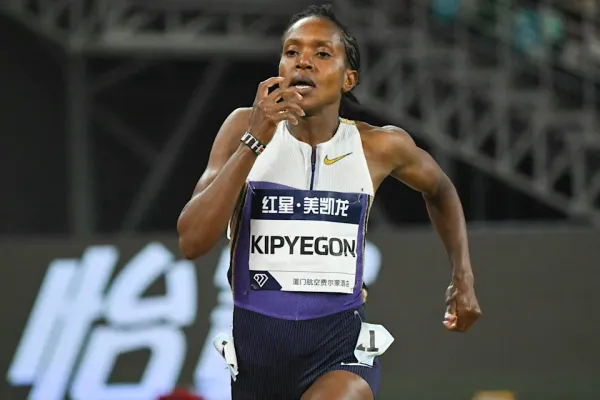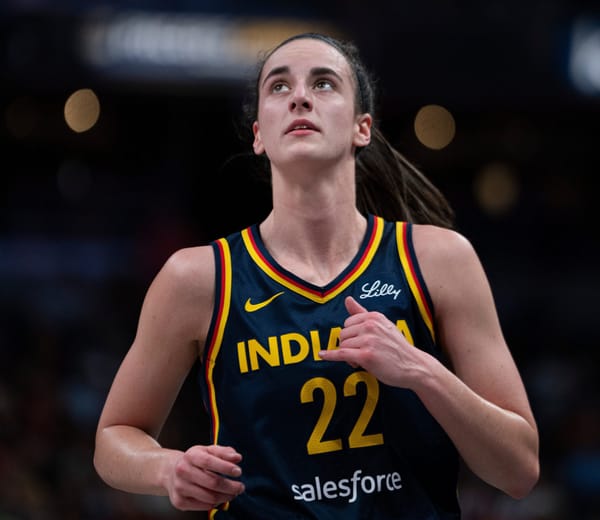The Fastest Mom on Earth: How Shelly-Ann Fraser-Pryce Rewrote Sprinting History
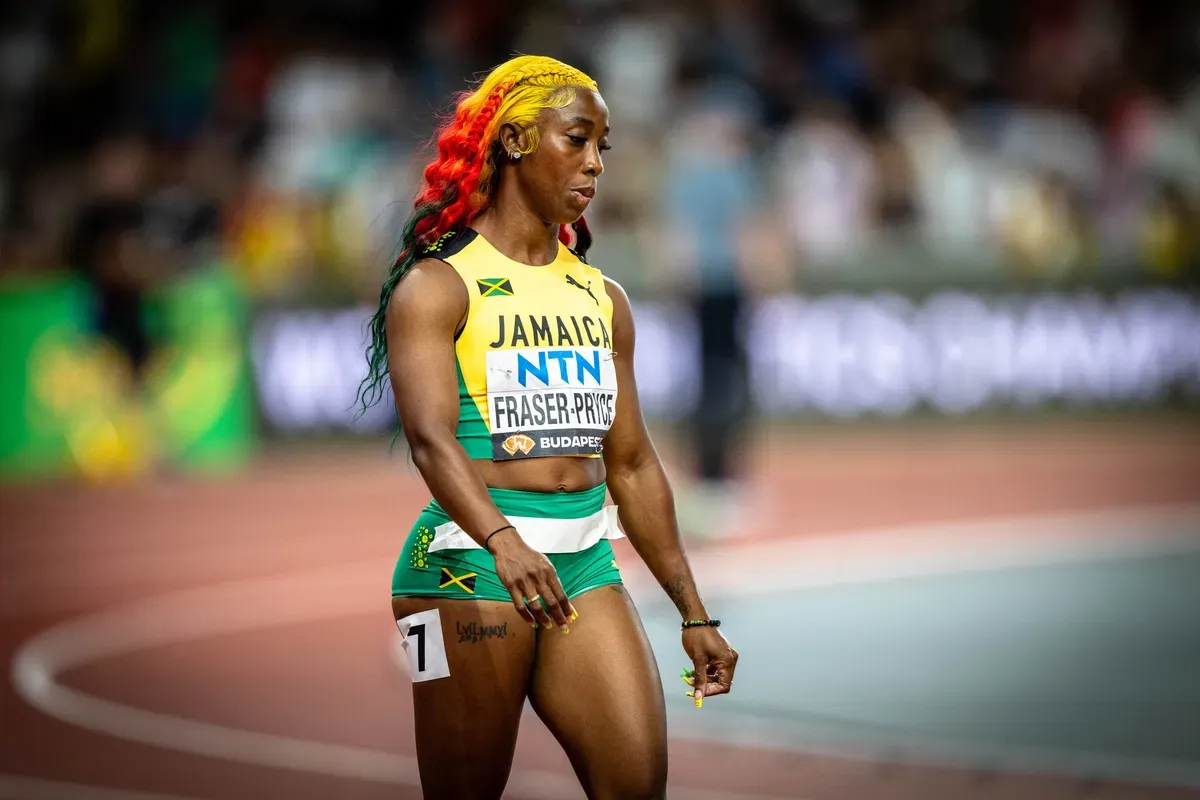
In a world that too often rewards the loudest voices and the tallest figures, Shelly-Ann Fraser-Pryce’s brilliance has always come quietly, at speed, and in defiance of expectations. Standing just five feet tall, hailing from a forgotten neighborhood in Kingston, Jamaica, and balancing Olympic ambition with motherhood—she was never supposed to dominate sprinting for nearly two decades.
Yet she did. And as she prepares to leave the track in 2025, her story stands as a beacon for anyone who has ever been told they were too small, too poor, too female, or too late.
From Waterhouse to the World: Humble Beginnings in Kingston
Waterhouse, a tough inner-city community in western Kingston, is where it all began. Shelly-Ann Fraser-Pryce grew up in a concrete house with zinc roofing and very little in the way of material wealth. Her mother, Maxine Simpson, juggled jobs as a street vendor and house cleaner, working tirelessly to provide for her children.
Running was never just a sport—it was survival. Fraser-Pryce often ran barefoot to and from errands. “I ran to the shop. I ran to school. It was all I knew,” she told The Guardian in 2019 (source).
Despite financial hardships, her mother emphasized education and discipline. Maxine’s unwavering belief in Shelly-Ann’s talent led her to get involved in youth athletics at Wolmer’s High School for Girls, eventually catching the eye of coach Stephen Francis.
This transition—one girl from a struggling community joining Jamaica’s powerful sprint machine—laid the foundation for what would become a historic career. But it was no smooth rise. Shelly-Ann was never the standout junior star. She had to claw her way onto the national radar, proving herself against more hyped prospects at every level.
Olympic Breakthrough: Beijing, London & Beyond
The 2008 Beijing Olympics marked a turning point—not just in Fraser-Pryce’s life, but in the global perception of Jamaican sprinting. Arriving as a little-known 21-year-old, she ran a blistering 10.78 seconds to win gold in the 100 meters, leading a Jamaican clean sweep of the podium (source).
Suddenly, the Pocket Rocket had ignited. It was the first time a Caribbean woman had ever won the Olympic 100m title—and she did it in style. Her explosive start and remarkable composure under pressure turned heads across the world.
In London 2012, she made history again, defending her 100m title in 10.75 seconds and earning silver medals in the 200m and 4×100m relay. Only two other women—Wyomia Tyus and Gail Devers—had ever won back-to-back 100m golds. Fraser-Pryce joined that elite club, but with less flash and more focus.
At Rio 2016, with a painful toe injury and declining form, she still managed to take bronze in the 100m. It was an emotional moment—one that proved even in struggle, she was elite. Few athletes have medaled in three straight Olympic Games. Even fewer have done it through injury.
She capped off her Olympic journey at Tokyo 2020, winning silver in the 100m behind training partner Elaine Thompson-Herah and anchoring Jamaica to gold in the 4×100m relay. This brought her Olympic medal count to eight—tying Usain Bolt as the most decorated Jamaican Olympian in history (source).
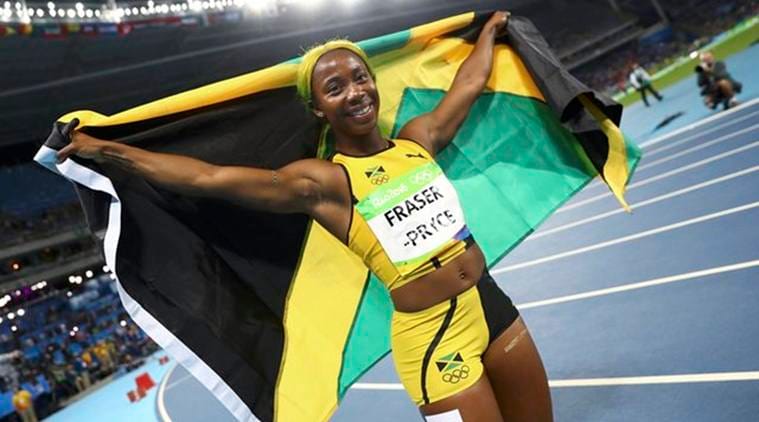
The Queen of the World Championships
If the Olympics were her coronation, the World Championships became her palace.
Shelly-Ann Fraser-Pryce is the only athlete in history to win five 100m world titles:
- 2009 (Berlin)
- 2013 (Moscow)
- 2015 (Beijing)
- 2019 (Doha)
- 2022 (Eugene)
Her 2013 run was perhaps the most dominant season ever for a female sprinter:
She swept gold in the 100m, 200m, and 4x100m relay in Moscow, becoming the third woman in history to accomplish this feat (source).
But the most inspiring moment may have come in 2019, just two years after giving birth to her son, Zyon. At 32 years old, she ran 10.71 seconds in Doha, beating the best in the world—and the odds—while donning a wig with rainbow-colored streaks and holding her toddler on the podium (source).
Then came 2022, when she reclaimed her title again—at 35. Running 10.67 seconds in Eugene, she led a Jamaican sweep and proved that age is just a number when paired with willpower and discipline (source).
Her total medal count at the World Championships stands at 14, including 10 golds—a feat unmatched in women’s sprinting.
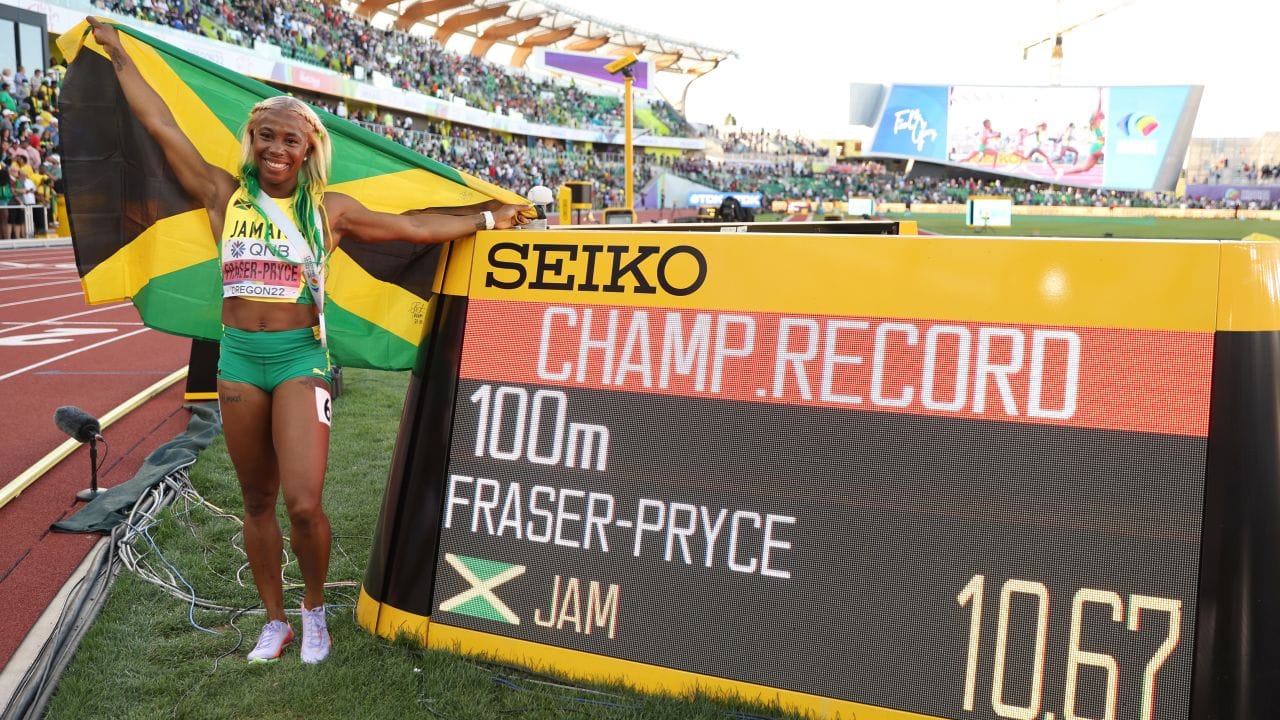
Explosive Talent, Ruthless Consistency
Technically, Fraser-Pryce is a marvel. Her reaction time off the blocks is consistently among the fastest in the sport. Her ability to hold form while accelerating—a skill often reserved for taller sprinters—has baffled coaches for years.
What sets her apart, though, is her consistency over time. She has run more sub-10.80 second races than any other woman—over 22 as of 2024 (source).
In 2021, at the age of 34, she clocked her personal best of 10.60 seconds, making her the third-fastest woman in history (source). She trails only Florence Griffith-Joyner (10.49s) and Elaine Thompson-Herah (10.54s).
This relentless pursuit of self-improvement, even in her 30s, redefined the prime years for women sprinters—and forced the world to recalibrate expectations.
Motherhood, Identity, and Advocacy
In 2017, Fraser-Pryce gave birth to her son, Zyon—a joyous yet life-altering event. Many assumed her career was over. Instead, she reemerged stronger.
She has since become a symbol of what’s possible for female athletes and mothers. "There’s this idea that once you have a child, your career is done," she told Time in 2021. "But I’m here to show that it can be just the beginning" (source).
She’s also been a vocal critic of athletic systems that fail to support mothers—pushing for improved maternity policies, childcare, and visibility for women balancing elite sport with parenting.
Her confidence in her faith, identity, and purpose has only grown. She regularly credits God, family, and her cultural roots for keeping her grounded. Whether through her brightly colored hair or her post-race interviews filled with warmth and wit, Fraser-Pryce has never shied from showing who she is.
Final Season: Saying Goodbye on Her Terms
In 2024, Fraser-Pryce announced that 2025 would mark her final competitive season. “My son needs me now,” she said. “I’ve run my race. Now it’s time for something new” (source).
While an injury forced her to withdraw from the 100m semifinals at the Paris Olympics, she still made headlines—winning her son’s school sports day race, leaving parents and spectators in awe (source).
She will end her professional career at the Jamaican National Championships in July 2025. There will be tears, ovations, and gratitude. Because if there’s one thing Fraser-Pryce has earned—it’s a standing ovation on her own terms.
The Legacy She Leaves Behind
Shelly-Ann Fraser-Pryce will be remembered for her times on the stopwatch, but she’ll be revered for her timing in life. She arrived just when the world needed her—a woman from a working-class neighborhood who dared to dominate a sport that didn’t always make space for women like her. In the age of fleeting fame and disposable heroes, she built something that endured: trust, admiration, and a legacy rooted in authenticity.
Her greatness lies not just in how fast she ran—but in what she stood for while doing it.
She was a revolutionary in spikes, quietly dismantling myths about what women, mothers, and Black athletes could achieve. She sprinted through eras, generations, and cultural shifts without ever losing the clarity of her values or the love for her island. Each win was personal, each comeback calculated, and each race a reminder that excellence isn’t loud—it’s consistent.
Fraser-Pryce has redefined the lifespan of a sprinter. She did what few dared, competing at the highest level well into her 30s, setting lifetime bests after motherhood, and mentoring the very women now vying to take her throne. In doing so, she created a relay of greatness, passing on more than just a baton—she passed on belief.
In Jamaica, she is more than a national treasure—she is a cultural compass. She’s inspired a generation of children who now see sprinting not just as a ticket out, but a path inward—toward self-discipline, purpose, and pride.
Internationally, she’s proof that power doesn’t need to be towering. That leadership can come with humility. That legacy is not about a single moment—it’s about what you consistently choose to rise above.
As she bows out from the track for the final time in 2025, her records will live on. But perhaps more important is the space she leaves behind—an opening for young athletes, especially women, to see themselves not just as participants in sport, but as architects of their own stories.
In the end, Shelly-Ann Fraser-Pryce didn’t just run fast.



